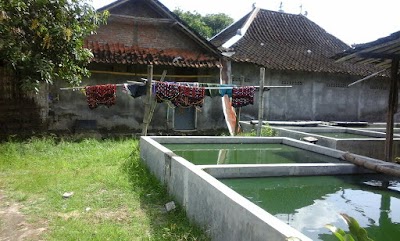Sepik River (River Sepik)
Overview
The **Sepik River**, elegantly winding through the lush landscapes of Papua New Guinea, is one of the longest rivers on the island of New Guinea. Flowing through the East Sepik Province, this mighty river carves its way through dense tropical rainforests teeming with life. Unlike many rivers worldwide, the Sepik has never been dammed or altered by humans, preserving its natural beauty and ecological significance. Originating in the Victor Emanuel Range of the Central Highlands, the river stretches over 1,100 kilometers (about 700 miles) before emptying into the Bismarck Sea.
The **cultural heritage** of the local communities living along the Sepik River is rich and diverse, deeply intertwined with the river itself. Indigenous people have thrived on the river's abundant resources for centuries, relying on it for fishing, transportation, and sustenance. Ornately carved canoes, made from massive logs, are a common sight navigating the river’s waters, symbolizing the profound relationship between the inhabitants and their environment.
One of the most striking architectural features along the river is the **spirit houses**, known as "haus tambaran." These sacred buildings serve as cultural, spiritual, and social hubs, adorned with intricate carvings and paintings that depict ancestral figures, mystical creatures, and elaborate patterns. The artistry showcased on these structures reflects the sophisticated skills of Sepik artisans, who use tools and techniques passed down through generations. The construction of these houses is a communal effort, involving tasks such as gathering materials, wood carving, and painting, all conducted collectively by the community.
The **festivals and ceremonies** along the Sepik River are vibrant displays of traditional dancing, singing, and drumming. These cultural expressions play a vital role in maintaining social cohesion and passing down the values, stories, and historical narratives of various tribes. Among the significant customs observed is the crocodile initiation, where young men endure scarification rituals that leave their skin resembling a crocodile, highlighting the revered status of these creatures in their culture.
Another notable feature of the Sepik River is its extensive network of **tributaries and lagoons**, creating a unique ecosystem filled with diverse flora and fauna. Birds, fish, and other wildlife thrive in this untouched natural paradise, which biologists and ecologists study to better understand the intricate balance of this complex environment. The river's floodplains are particularly fertile, nurturing various plant species that are utilized for food, medicine, and craft materials by the local people.
The Sepik River’s journey from its mountainous origins to the sea is steeped in both **natural splendor and cultural richness**. Its unaltered state offers a glimpse into a world where traditions remain largely intact, and where the rhythms of nature and human life are closely intertwined. In East Sepik Province, the Sepik River continues to be a source of inspiration, sustenance, and identity, cherished by all who live along its banks and beyond.







